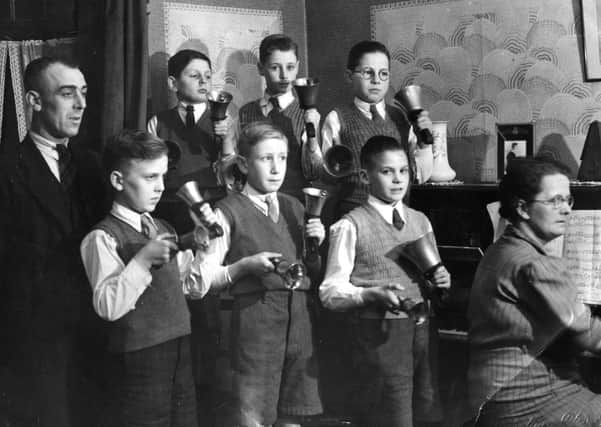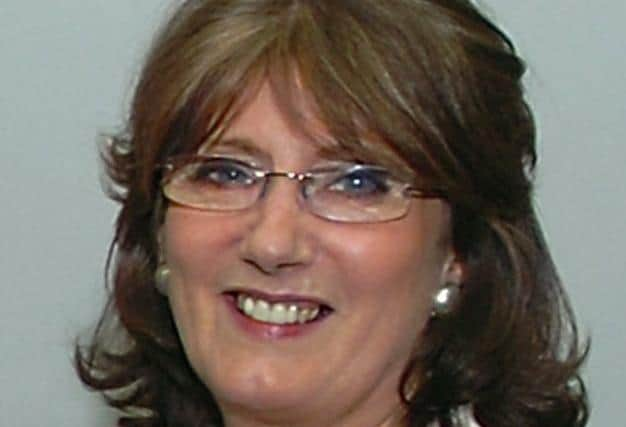The Nostalgia Column with Margaret Watson: Ringing in the New Year


Also, it may revive happy memories for those who once attended St Peter’s Church which, like so many in the district, have since closed down.
The hand bells were played by these young boys in the 1940s at both the church and at concerts throughout the district.
Advertisement
Hide AdAdvertisement
Hide AdThis picture was taken in 1946 at the home of their conductor, Mr Crossland, whose wife, Winnie, can be seen seated at the piano.


The story of the bells is a fascinating one which stretches back to 1887 when a group of local musicians formed themselves into a hand-bell band.
They operated under the name of the ‘Dewsbury Ringers’ and became not only locally famous but also nationally.
Three times they won the national championships at Belle Vue, Manchester, in – 1888, 1894 and 1897.
Advertisement
Hide AdAdvertisement
Hide AdIn the early 1900s, however, membership began to dwindle and they were forced to disband and their famous bells sold.
The man who bought them, Harry Darnborough, later sold them to a group of hand-bell ringing enthusiasts called the ‘Earlsheaton Ringers’ based at the Park Hotel.
This merry little band played all over the district and soon earned themselves a fine reputation.
But they too were to disband and their bells sold to St Peter’s Church, Earlsheaton, who wanted to build up a combination of hand-bell ringers among the boys of the Sunday School.
Advertisement
Hide AdAdvertisement
Hide AdMr Crossland, of Park Road, Earlsheaton, agreed to train them, and his protégés are pictured above at a training practice at his home.
Some years ago I was able to interview one of the boys pictured, Derrick Wainwright, who gave me some interesting background to the ‘Earlsheaton Ringers’.
He also remembered that when St Peter’s had been demolished in the 1970s their big church bells were sold for scrap.
The hand bells, however, were saved and are now believed to be in the safe-keeping of Dewsbury Minster Church.
Advertisement
Hide AdAdvertisement
Hide AdDerrick also recalled how the ‘Earlsheaton Ringers’ had not only played at church, but also at concerts throughout the district, church bazaars and other events.
The church in those days played an important part in his life and he spent a good deal of his time there.
He recalled having learned to play the big church bells and also the church organ, as well as the hand bells.
“I used to go to church four times on Sundays. I’d be there at eight in the morning for Communion, 10.30am for Matins, 2.30pm for Sunday School, and be back again at six to ring the bells for the evening service,” he said.
Advertisement
Hide AdAdvertisement
Hide Ad“After the evening service the young people would go into the schoolroom where the youth group met, but when our numbers began dwindling, we started meeting in each other’s houses.
“There was no such thing as going out and kicking a ball round the streets on a Sunday in those days.”
Derrick was taught how to ring the church bells by Mr Hemingway Dransfield, who was the leader of the bellringers, and the piano by Ernest Grimshaw.
He also played the organ at various other churches, including the Ebenezer Chapel on Longcauseway, now called the United Reformed and Methodist Church.
Advertisement
Hide AdAdvertisement
Hide AdOther churches where he played included St Mary’s Church, Savile Town, which was knocked down, and also at Thornhill Lees and Staincliffe.
He said: “When I went into the Army to do my National Service, I played at the Garrison Church in Portsmouth and when I came out I played at South Ossett.”
Many people in Dewsbury were saddened when the big church bells at St Peter’s were sold for scrap and destroyed.
None more so than the late Herbert Wood, a bell-ringer at Thornhill Parish Church, who remembered what a lovely sounding ring of bells they were.
Advertisement
Hide AdAdvertisement
Hide AdHe said the bells had been made in 1853 by Charles and George Mears of the Whitechapel Bell Foundry in London.
For many years up to the last war, the ringers of these bells were among the best band of ringers in the surrounding districts.
“They won many ringing competitions,” he recalled.
“But as the old ringers passed away there were no younger ones to take their place, and in the late 1950s they only had two ringers left – Hemingway Dransfield and Harvey Lumb.
“Whenever they had an occasion when they wanted the church bells to be rung, we the Thornhill ringers went to ring with them.
Advertisement
Hide AdAdvertisement
Hide Ad“In the 1960s the church became redundant and in the early 1970s the bells were rung for the last time.
“Soon afterwards, the bells were dropped out of the tower of St Peter’s and sold as scrap metal.
“Fortunately there are now strict rules that would not allow such a lovely ring of bells to be destroyed.”
Herbert, a miner at Combs Colliery in Thornhill, was one of many working men who were taught to be bell ringers or organists at their local churches.
○ May I take this opportunity to wish you all a very happy – and healthy – new year, and I hope to be back again writing for you in 2021.